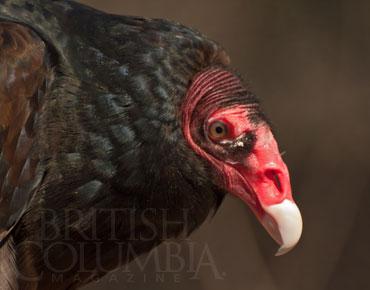
It would be difficult to design a bird with worse manners than a turkey vulture. As a scavenger, its raison d’etre is to cleanup animal carcasses; and it approaches this task with zeal. Its head—the colour of exposed flesh—is featherless and tapered, perfect for plunging repeatedly into the cavities of carrion. While the bird can be excused its choice of entrée—who doesn’t like free food?—some of its other adaptations are downright bizarre. Here are just a few of our favourite turkey vulture facts:
- A turkey vulture’s preferred defense mechanism is regurgitation. Get too close and you could be showered in foul smelling half-digested food.
- To cool off, a turkey vulture will sometimes defecate on its own legs.
- The bird can detect mercapton, a gas produced by carrion as it’s beginning to decay, from more than one and a half kilometres away.
- Turkey vultures have no voice box, so cannot sing (though do hiss and grunt). They rely on clumsy dance moves to attract mates instead.
- The Cherokee people of the U.S. know the bird as the “peace eagle,” because it does not kill.
In the Fall 2010 issue of British Columbia Magazine we explained that one of the best place to witness turkey vultures in B.C. is at East Sooke Park on Vancouver Island during their fall migration. Ann Nightingale of the Rocky Point Bird Observatory offers this tip: “Sometimes people have found that if they lie down on the ground and play dead the turkey vultures will come a little closer. I don’t know if that’s just a rumour or if there’s validity to it, but once they realize it doesn’t smell bad, they don’t stick around!”

